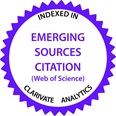Tytuł
Mapa i terytorium. Nadawanie i odbieranie sensu przez architekturę organizacyjną
Keywords
organisational structure, corporate architecture, sensemaking, organisational aesthetics
Słowa kluczowe
struktura organizacyjna,architektura korporacyjna sensemaking,estetyka organizacji
Abstract
“The map is not the territory” is a famous dictum by Alfred Korzybski that accurately describes the difficult relations between organisational structure and space. With the evolution of the contemporary approaches to organisational design, both these issues have faced a deep paradigmatic shift. The concept of organisational structure has advanced through functional, divisional, matrix, lean, networked, virtual and fractal approaches, reflecting the reorganisation of entrepreneurial processes and sources of competitive advantage. Concurrently with that, the principles of organisational space arrangement evolved from Taylorist offices, through Bürolandschaft, Action Office, cube farms, to networking, virtual and casual working places, reflecting the changing corporate cultures and the essence of modern work. While agility of organisational design, accompanied by elasticity of working environment might seem very appealing in a modern economy, it often lacks the elements of identity building and sensemaking that are crucial for contemporary knowledge workers.
Abstrakt
„Mapa nie jest terytorium” – ten sławny cytat autorstwa Alfreda Korzybskiego doskonale oddaje trudne relacje pomiędzy strukturą i przestrzenią organizacyjną. Wraz z ewolucją podejść do projektowania organizacji oba te wymiary przeszły głębokie zmiany paradygmatyczne. Organizacyjne struktury ewoluowały od podejścia funkcjonalnego, dywizjonalnego, przez macierzowe, szczupłe, sieciowe, aż po wirtualne i fraktalne, odzwierciedlając reorganizację procesów biznesowych i źródeł przewagi konkurencyjnej. Równolegle zasady projektowania przestrzeni pracy ewoluowały od taylorowskich biur, przez Bürolandschaft, Action Office i farmy kubików, aż po biura sieciowe, wirtualne i swobodne, odzwierciedlając zmiany w kulturze organizacyjnej i istocie pracy. Jakkolwiek przekonująca, w warunkach współczesnej gospodarki, jest elastyczność struktur organizacyjnych, połączona z łatwym do adaptacji środowiskiem pracy, to nie można zapominać, że często brakuje jej wymiarów odpowiedzialnych za budowanie tożsamości i nadawanie sensu, które są tak istotne dla współczesnych pracowników wiedzy.
Recommended Citation
Dzidowski, A. (2014). The map and the territory. Sensemaking and sensebreaking through the organisational architecture. Problemy Zarządzania, 12(49), 29-44. https://doi.org/10.7172/1644-9584.49.2
First Page
29
Last Page
44
Page Count
15
DOI
10.7172/1644-9584.49.2
Publisher
University of Warsaw








